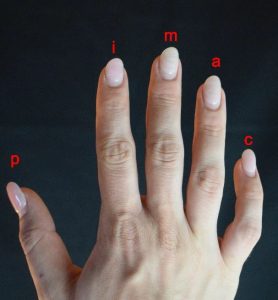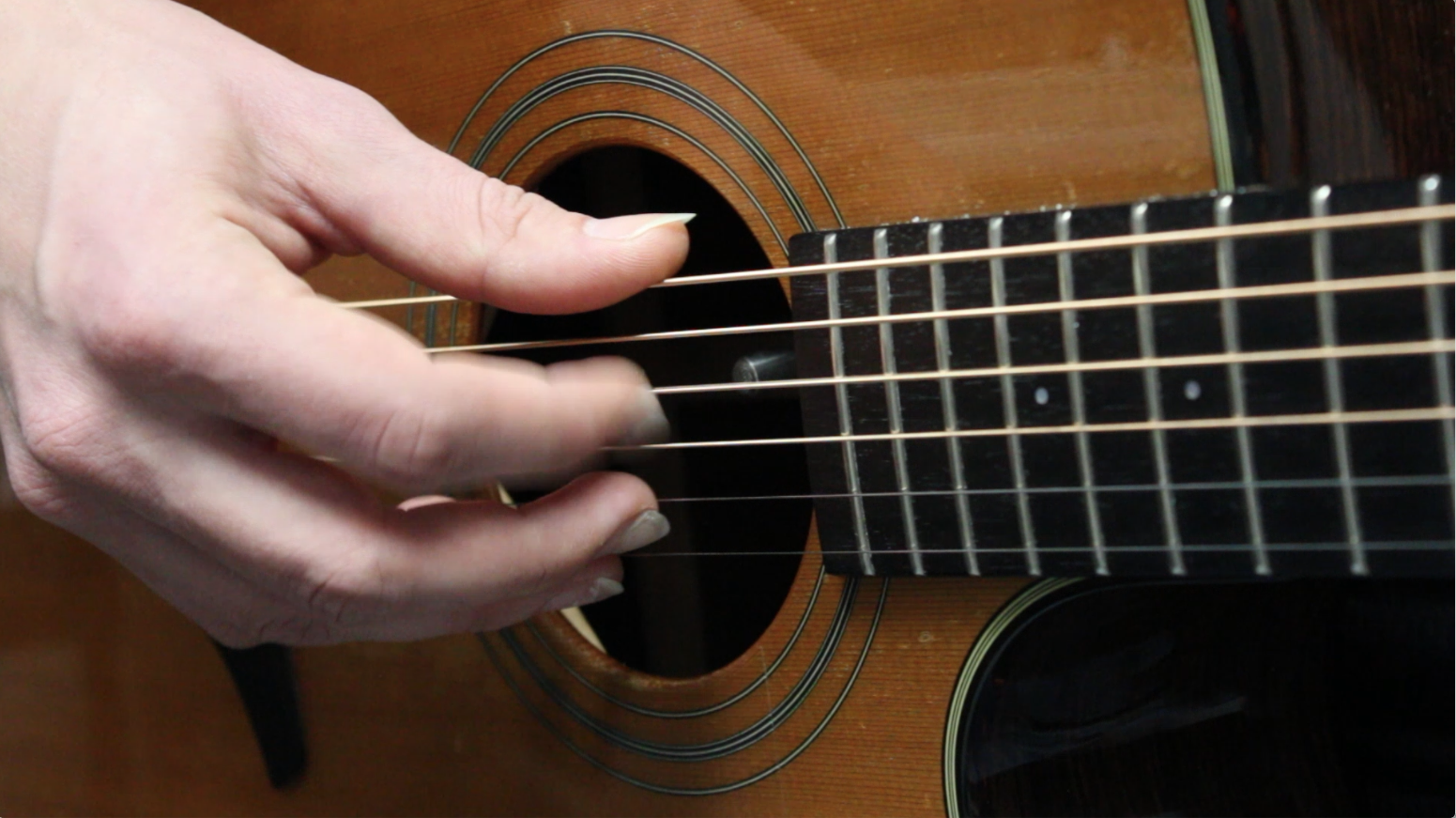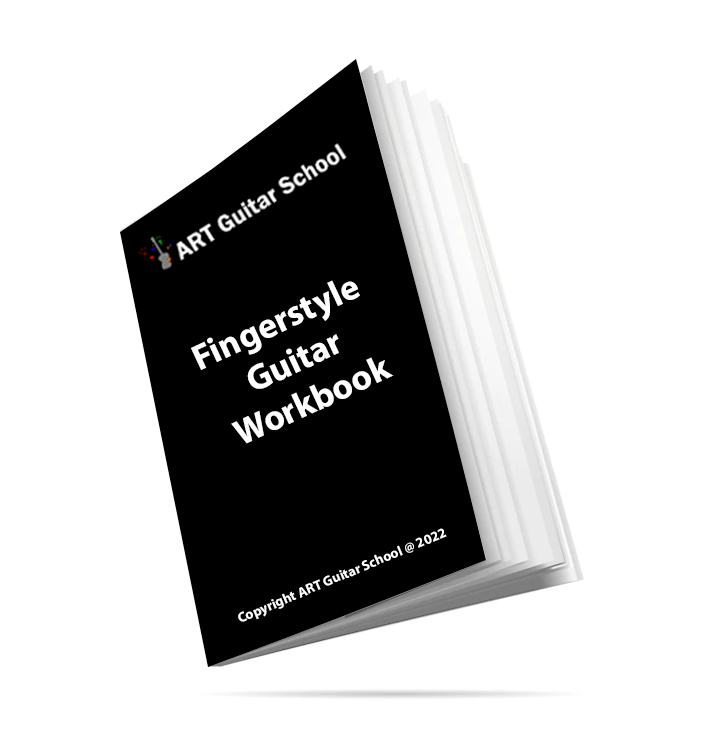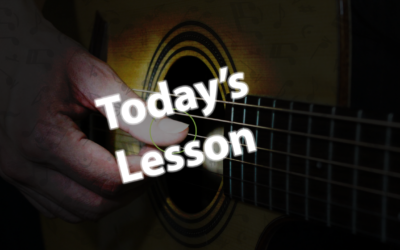FINGERPICKING KEY

The right hand:
P = Thumb
I = Index
M = Middle
A = Ring
Fingerpicking Pattern No. 1
This is the most essential fingerpicking pattern to start with. It requires no left hand chord or fretted notes. It is used in many popular fingerpicking songs and some songs are slight variations of this same pattern.
We have all open strings being plucked in sequential order. Each note is a quarter note in duration and will last exactly one second each if played at 60bpm.
Lets get to playing!
We will pluck each open string in order starting from the 6th string (Low E) and ending on the 1st (High E).
Step 1. Lets start with thumb (p) and pluck the 6th-4th string
Step 2. Pluck index (i), middle (m) and ring (a) on the 3rd-1st strings.

Here is a video demonstration of the finger picking pattern:
If you were having trouble please contact us and we will help you!
FOLLOW US ON
Get our FREE Fingerstyle Workbook!
RELATED BLOG POSTS
Fingerstyle Guitar Arrangements: Create Your Own Songs
Creating your own fingerstyle guitar arrangements is an exciting way to express yourself. This post provides guidance on how to develop your own fingerstyle arrangements by starting with simple chords and melodies.
Start with a Simple Chord Progression Choose a simple chord progression, and experiment with playing the bass notes with your thumb while picking the melody with your fingers. As you become comfortable, you can add more complexity to the arrangement.
Add Melodies and Embellishments Once you’ve mastered basic fingerpicking patterns, start incorporating melodies into the arrangement. Add embellishments like hammer-ons, pull-offs, and slides to make the arrangement uniquely yours.
Fingerstyle Guitar Jam Tracks: Practice with Real-World Application
Practicing fingerstyle guitar can sometimes feel like a solitary activity, but playing along with jam tracks can take your skills to the next level. In this post, we explore how using fingerstyle guitar jam tracks can help you apply techniques in a musical context.
Why Use Jam Tracks? Jam tracks simulate the experience of playing with a band or other musicians, giving you a sense of rhythm and timing. This helps you stay in sync, improves your timing, and helps develop the groove of your playing.
Where to Find Jam Tracks There are many websites that offer jam tracks specifically designed for fingerstyle guitar, which include a variety of tempos and genres to fit your skill level. These tracks can be used to practice specific techniques, including basic fingerpicking and advanced rhythmic patterns.
Specialized Fingerstyle Techniques
Fingerstyle guitar is versatile, and mastering specialized techniques can help you stand out. In this post, we dive into specific techniques like Travis picking, thumb independence, and using fingerstyle for vocal accompaniment.
Travis Picking Travis picking is one of the most iconic fingerstyle techniques, where your thumb alternates between the bass strings, while your fingers play the melody on higher strings. It’s the foundation of many classic songs in folk, country, and bluegrass music.
Thumb Independence Building thumb independence is key to mastering fingerstyle. It allows you to maintain a consistent bass rhythm with your thumb while playing more complex melodies and harmonies with your fingers.
Accompanying Vocals with Fingerstyle Fingerstyle is ideal for accompanying your voice while playing guitar. Using basic fingerpicking patterns, you can support your vocals with rich bass lines and melodic accompaniments that fill out the song.




0 Comments